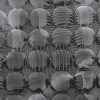Free Online Productivity Tools
i2Speak
i2Symbol
i2OCR
iTex2Img
iWeb2Print
iWeb2Shot
i2Type
iPdf2Split
iPdf2Merge
i2Bopomofo
i2Arabic
i2Style
i2Image
i2PDF
iLatex2Rtf
Sci2ools
ICCV
2009
IEEE
2009
IEEE
Radiometric Compensation using Stratified Inverses
Through radiometric compensation, a projector-camera system can project a desired image onto a non-flat and nonwhite surface. This can be achieved by computing the inverse light transport of a scene. A light transport matrix is in general large and on the order of 106 × 106 elements. Therefore, computing the inverse light transport matrix is computationally and memory intensive. Two prior methods were proposed to simplify matrix inversion by ignoring scene inter-reflection between individual or clusters of camera pixels. However, compromising scene inter-reflection in spatial domain introduces spatial artifacts and how to systematically adjust the compensation quality is not obvious.
In this work, we show how scene inter-reflection can be systematically approximated by stratifying the light transport of a scene. The stratified light transport enables a similar stratification in the inverse light transport. We can show that the stratified inverse light transport converges to the
true...
| Added | 12 Sep 2009 |
| Updated | 10 Jan 2010 |
| Type | Conference |
| Year | 2009 |
| Where | ICCV |
| Authors | Tian-Tsong Ng, Ramanpreet S. Pahwa, Jiamin Bai, Tony Q.S. Quek, and Kar-Han Tan |
Comments (0)



